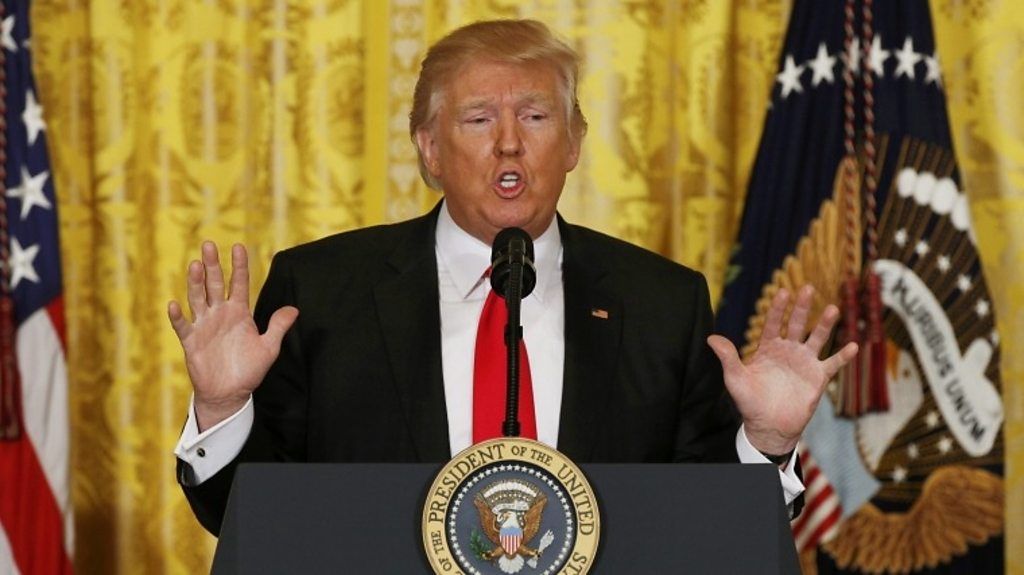Analysis of Trump’s Press Conferences and the Media: Donald Trump Press Conference

Donald Trump’s press conferences were a spectacle unlike any other in modern American politics. His confrontational style, often characterized by personal attacks, insults, and outright falsehoods, created a dynamic relationship with the media that was both fascinating and fraught.
Trump’s Communication Style and the Media
Trump’s communication style was a significant departure from the norms of presidential press conferences. He frequently engaged in personal attacks against journalists, calling them “fake news” and “the enemy of the people.” He often refused to answer questions directly, instead launching into rambling speeches or making false claims. This created a hostile environment for journalists, who found themselves constantly having to fact-check and push back against Trump’s rhetoric.
Media Coverage and Reactions to Trump’s Press Conferences
The media’s coverage of Trump’s press conferences was often highly critical, focusing on his inaccuracies, inconsistencies, and inflammatory language. Some outlets, particularly those considered liberal or left-leaning, actively sought to debunk his claims and highlight his perceived flaws. Others, particularly conservative outlets, tended to be more supportive of Trump, often downplaying his controversial statements or offering alternative interpretations.
Challenges and Opportunities for Journalists, Donald trump press conference
Trump’s press conferences presented a unique set of challenges and opportunities for journalists. On the one hand, his confrontational style and willingness to make outrageous claims created a sense of urgency and drama that could attract viewers and readers. On the other hand, it made it difficult to get accurate information from him, as he often refused to answer questions directly or made false statements. This forced journalists to be more vigilant in fact-checking and challenging Trump’s claims, leading to a more adversarial relationship between the press and the president.
Comparison of Coverage Across Media Outlets
| Outlet | Coverage Tone | Examples |
|---|---|---|
| CNN | Highly critical, focusing on fact-checking and debunking Trump’s claims | CNN often ran fact-checks during Trump’s press conferences, highlighting inaccuracies and inconsistencies in his statements. They also frequently featured commentary from experts who criticized his policies and rhetoric. |
| Fox News | Generally supportive, often downplaying Trump’s controversial statements or offering alternative interpretations | Fox News often presented Trump’s statements in a more favorable light, emphasizing his accomplishments and downplaying his controversies. They also frequently featured commentators who defended his policies and rhetoric. |
| The New York Times | Critical, but also attempting to provide a balanced and factual account of Trump’s actions and statements | The New York Times often published detailed accounts of Trump’s press conferences, including his remarks, his interactions with the press, and his policy pronouncements. They also frequently published fact-checks and analysis of his statements. |
Donald trump press conference – Donald Trump’s press conferences were often unpredictable, filled with dramatic pronouncements and fiery rhetoric. But amidst the political storms, it’s refreshing to remember the power of human potential, as embodied by rising track star Lamecha Girma. Learn more about Lamecha Girma’s remarkable journey.
Returning to the world of politics, Trump’s press conferences often served as a platform for his unique brand of communication, a blend of charisma and controversy that captivated the nation.
Donald Trump’s press conferences were often characterized by their combative nature, with the former president frequently engaging in heated exchanges with reporters. His use of rhetoric, often bordering on inflammatory, aimed to control the narrative and project an image of strength and dominance.
For a deeper dive into the style, content, and impact of these events, you can explore an insightful article here. The legacy of these press conferences continues to be debated, with some arguing they were a necessary tool for communicating directly with the public, while others criticize their divisive nature and lack of factual accuracy.